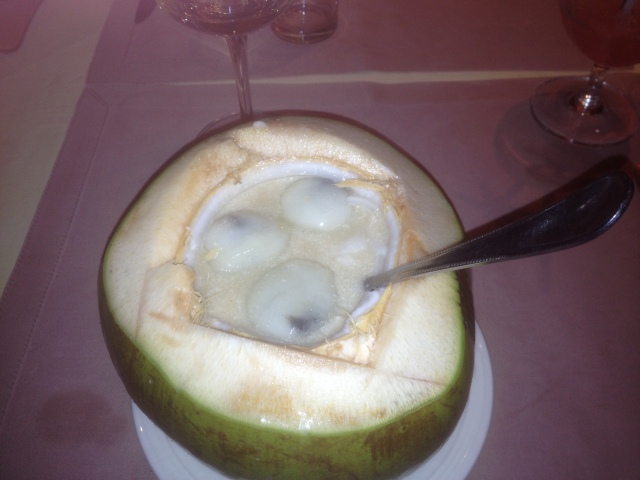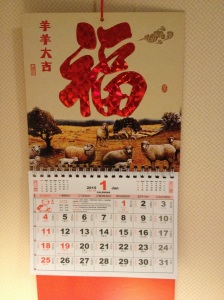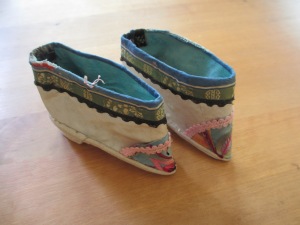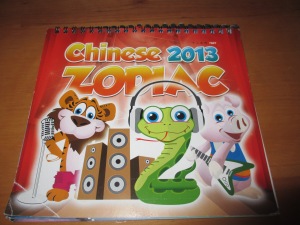Content
- .
- All Saints day
- Along the river during the Qing Ming Festival
- animated scroll painting
- China
- china pavilion
- Chinese countryside
- Chinese culture
- Chinese Festivals
- Chinese history
- Chinese literature
- Chinese New year
- Chinese pop music
- Chinese restaurants
- chinese traditions
- Christmas traditions
- Culture
- Dragon boat Festival
- Dragon Boat Races
- Duanwu festival
- Easter eggs
- Easter traditions
- expo exhibition
- Full moon
- Full moon night
- General Wu Sangui
- Guangzhou
- Ikea
- Istanbul
- Japan earthquake
- Kunming
- Lantern festival
- Li Bai
- Lucia
- Lund University Male Student Choir
- Magnolias
- Maypole in Sweden
- Mid-Autumn Festival
- Midsummer Night
- Moon Cakes
- Mo Yan
- Nobel Prize
- Nuclear power plants
- Old traditions
- Prayer wheel
- Qing Ming
- Qiu XiaoLong
- Rabbit lanterns
- Royal wedding
- Shanghai
- Shanghai culture
- shanghai world expo
- Shangri-La
- Spring in Sweden
- Sweden
- Swedish countryside
- Swedish culture
- Swedish Literature
- Swedish nature
- Swedish pavilion
- Swedish Royal Family
- Swedish witches
- The year of the Rabbit
- Tibet
- Tomb Sweeping Day
- Tsunami
- Valentin´s Day
- Wang Lee Hom
- Winter
- World Expo
- world expo 2010
- Yaks
- Yuan Xiao Jie
- Yunnan
- Zong Zi
Categories
Top Rated
Archives
- January 2015
- December 2014
- February 2014
- January 2014
- July 2013
- June 2013
- March 2013
- January 2013
- December 2012
- October 2012
- September 2012
- August 2012
- June 2012
- May 2012
- April 2012
- March 2012
- February 2012
- January 2012
- December 2011
- November 2011
- October 2011
- September 2011
- August 2011
- July 2011
- June 2011
- May 2011
- April 2011
- March 2011
- February 2011
- January 2011
- December 2010
- November 2010
- October 2010
- September 2010
- August 2010
- July 2010
- June 2010
-
Join 57 other subscribers
Meta
Jie & Karin
Blog Stats
- 14,054 hits
2014 in review
The WordPress.com stats helper monkeys prepared a 2014 annual report for this blog.
Here’s an excerpt:
A San Francisco cable car holds 60 people. This blog was viewed about 960 times in 2014. If it were a cable car, it would take about 16 trips to carry that many people.
Posted in Cross-culture comparisons
Leave a comment
元宵节快乐!Happy Lantern Festival!

Yuan Xiao Jie kuai le! Happy Lantern Festival with Tang Yuan, sweet rice dumplings
Posted in Chinese traditions, Cross-culture comparisons
Tagged Lantern festival, Tang Yuan
Leave a comment
新年快乐!

Happy New Year of the Horse! 马年大吉
2013 in review
The WordPress.com stats helper monkeys prepared a 2013 annual report for this blog.
Here’s an excerpt:
A San Francisco cable car holds 60 people. This blog was viewed about 1,600 times in 2013. If it were a cable car, it would take about 27 trips to carry that many people.
High Heels, Bound feet
Foot binding of young women´s feet was a custom in China for a thousand years from 10th Century, until it was forbidden in the 20th century with the founding of People´s Republic of China. It started in the royal palaces and later spread to wealthy families and then further to the common people. (Splendid slippers (2000), by Beverly Jackson). It is a painful procedure of binding the toes, breaking and bending them beneath the foot to make the foot smaller with a pointed shape. Millions of Chinese women endured the binding and breaking of bones through centuries. And the foot binding was carried out by mothers, on daughters, for the pleasure of men.
You can find a detailed description of the procedures of foot binding in the book (and the movie) Snow Flower and the Secret Fan (2005) by Lisa See. Karin and Jie were both deeply moved by the book when reading it some years ago.
Jie: The description of binding the feet of the six-year old girls in the book was heartbreaking to read. It used to be a terrible tradition in old China. My great-grandmother also had tiny bound feet, but I was too young to notice it then.
Ballet dancing with bound feet
The start of the tradition of bound feet seems to be some kind of ballet dancing (like our western ballerinas) performed by a concubine to Prince Li Yu in the Ten Kingdom period in Southern China. And it spread as a fashion and a way to reach high status for women. The belief was that a girl would not get married if she hadn´t tiny bound feet. It was also a way for the men to control the women, since the women could not walk easily with the bound feet. They were “helpless” and dependent, which aligned with Confucian values of women being subordinate to men. (Splendid slippers (2000), by Beverly Jackson).
Lotus feet
The shape of the feet was supposed to resemble a lotus flower bud with a thin point at the front.They were fitted into special tiny embroidered shoes. Three inches was a desirable size. Sometimes they were bigger.
Red miniature shoes for Kuan Yin
When the foot binding process was to begin, the mother made red miniature shoes, which was brought to the altar of the goddess Kuan Yin at a temple together with offerings of fruit and special red bean dumplings. Prayers would be said to wish for a successful result of the foot binding.
Western high heels shoes – cultural difference or similarity?
Karin: What has come to my mind is that the western fashion of high heel shoes with very narrow front is actually the same thing. Although we haven’t had the binding and deformation of feet, it is not the most comfortable shoes to wear.
Jie: Oh, I think this is an interesting topic! A cultural difference!
Karin: Why?? I would say a cultural similarity!
Jie: High heels was invented by Louis 14th in France, in purpose of increasing one’s charm, which eventually became popular, while binding feet is for men’s interest totally—that’s what I call a cultural difference. Although I think it is also a cultural similarity, and I do believe you can always find both cultural difference and similarity in one thing.
Karin: Ok, I agree, there is a difference since high heels is a more voluntary choice by women in adult age, but still to the men’s appeal, don’t you think? And the beauty ideal is about the same.
Jie: Yes, I agree. What’s interesting is that, after generations of women rights development, Chinese women no longer suffer from the pain of binding feet, but now they voluntarily suffer for beauty!
Karin: It makes me think of you climbing the mountain in Kunming with your high heel shoes! Do you remember that? (See our previous blog , January 2011). You had to buy a pair of traditional flat cloth shoes to survive the day! Haha!
Jie. Won’t forget it! I was so stupid to wear high heels climbing the mountain! (and I remember I kept murmuring ‘if they sell comfortable shoes here…’, and they did!) Anyway, women seems to be willing to suffer for beauty!
Dragon Boat festival, Midsummer festival and three year anniversary!
Dragon Boat Festival in China
This week is Dragon Boat festival in China with a 3-day holiday. Then you compete with dragon boats in teams and eat Zongzi, a kind of sticky rice dumpling wrapped in bamboo leaves. (See picture and our previous blogs, June 2012, 2011).
Midsummer festival in Sweden
Next week is Midsummer festival in Sweden, the biggest holiday next to Christmas. Typical for the Midsummer celebrations is to raise a maypole with leaves and flowers and then sing and dance around it. (See picture and in our previous blogs, June 2012, 2011). Herring, potatoes and strawberry cake is the typical food, with a glass of schnapps.
And 3 year blog anniversary for Chinamirror!
This June we also celebrate our 3 year anniversary with the blog. We have two blogs with the same content, one in English, Chinamirror.wordpress.com and one in Chinese, blog.sina.com.cn/Swedish Eyes,Chinese Mind. In total we have written 52 posts and have had 15 000 visitors from over 100 countries. Our blog is truly global. Most visitors at our English blog came from Sweden, the United States and Malaysia in 2012, but we also had visitors from most countries in Europe as well as Azerbadjian, Pakistan, Uruguay, Brazil, Egypt, Saudi Arabia, Turkey, South Africa, Singapore, Australia. At our Chinese blog most of the visitors are from China.
Midsummer festival and Chinese restaurants in Sweden
The most popular posts are about Swedish and Chinese festivals. At our English blog the Swedish Midsummer holiday is one of the most popular topics, and among the Chinese festivals the Lantern festival, and the Qing Ming holiday are the most popular. Other popular topics has been: Apartments in China and Sweden, The Mystery with the bamboo scroll, and The Story about Wang Lee Hom.
In the Chinese blog typical Swedish topics like the Nobel Prize and the Midsummer holiday are the most heated, but Chinese restaurants in Sweden is also a top topic!
Sami people eyes, empty street, clear river water
People coming to our English blog have used searchwords like Swedish nature, Swedish Midsummer, Qing Ming taboos and Wang Lee Hom. Some other common search words are a bit more peculiar, like “sami people eyes”,“empty street”,“clear river water”. As for the Chinese blog, we can see search words like “Swedish dancing, Swedish education and Istanbul”.
Blogging out of date?
Our blog has a special character, with topics like literature, history and traditions in Sweden and China, althoug we also try to cover current hot topics. We both love writing, but we sometimes disagree about the style and length.
Karin: Jie, I remembered you once said to me that you knew exactly what your friends would like to read, “And it is definitely not the kind of long and serious articles you write”! you told me.
Jie: Well, I used to love blogging till the trend of weibo (Chinese Twitter) came. It just saves time and is easier to get people’s attention and feedback soon.
Karin: It seems to be a trend towards shorter comments or just pictures in the social media both in China and in the west. Micro blogs like Twitter and Weibo have become more popular than blogging. It is probably due to more people access the internet through their mobile phones, which makes shorter content more convenient.
Jie: I agree. It especially suits Chinese. You can see that China are so different from Europe regarding work laws. So people usually work long hours (I heard that it’s the same case with other Asian places like Japan and Korea) and they can’t spend a lot of time blogging. Weibo is a way to relax for them.
Lately we have both lacked time to keep up with our ambitions to write twice a month. From now on we will write less frequent and shorter but still try to put out interesting photos and catch up with current topics. Maybe we also will try Twitter and Weibo (Chinese Twitter). If you like our blog, please give us a comment about what topics you would like to read about!
Happy Dragon Boat festival, on June 12thin China!
Happy Midsummer Festival, on June 21stin Sweden!
from Jie and Karin
The Chinese Art of Cutting Vegetables
This time we want to highlight the Chinese art of cutting vegetables, which is an ancient Chinese tradition. First we show some art pieces displayed at a Chinese New Year Festival in Alameda, near San Francisco 2012.
Jie: It is said that this kind of art developed for the pleasure of the emperors in old times. Nowadays, a Chinese chef is not only judged by the flavor he made, but everything else combined.
Daogong, one of the most important skills of Chinese chefs
One of the most important skills on which Chinese chefs are judged is the daogong, or cutting technique, according to Jen Lin-Liu, author of the book ” Serve the people”, where she writes about her experiences of Chinese cooking skills. The cutting techniques and knives are different in different Chinese regional cuisines and there are dozens of terms for cutting based on the angle and the motion of the cut, e.g pulling, pushing, sawing, rolling or waving. Knives are particularly important in the preparation of Chinese food since you don’t have knives when you eat. Everything in a Chinese meal needs to be cut into pieces to make it manageable to pick up with chopsticks . (Source: Jen Lin-Liu, “Serve the people, A stir fried journey through China”)
Amazing skills to watch
Karin: The art pieces that skilled Chinese chefs make out of vegetables are truly amazing to watch! At a meeting in the Swedish-Chinese Association in Sweden we had the pleasure of watching a Chinese chef, Zhang Jian, demonstrating his skills in vegetable cutting. He had a whole set of knives and carved the most beautiful flowers and animals from cabbage, cucumber, carrot, beetroot, radish etc.
Karin: In Sweden it is not common to do this kind of carving of vegetables. But in Rome the other week I saw some nicely carved vegetables at the farmers market.
The Chinese New Year is approaching! Xin Nian Kuai Le! Gong Xi Fa Cai!
The year of the Snake- rattle and shake!
The Chinese New Year, the Spring Festival, is approaching. The year of the Snake starts on February the 10th.The snake has according to a Chinese calendar:
“An inherent unique wisdom, love at the good things in life. Often rely on their own judgement. Suspicious in nature but cautious and alert at work. Possess a strong sense of responsibility, and having clear goals will progressively lead to success.” The calendar also says that 2013 will be a “year of trials and testings. Be firm and acquire wisdom through the difficulties”! It seems like it is pointing at the economic situation in Europe and US. Beware and be wise!
Traffic, traffic, traffic!
In China the Lunar New Year, or Spring Festival, means TRAFFIC, millions of people going home on roads, trains, and flights. Over 200 million people are on the road at the same time! It sure gets crowded. This is the big family reunion holiday in China, a whole week holiday from work, and usually a whole month holiday for students. For many migrant workers it is the only time of year to meet their parents or children.
Childhood memories of Chinese New Year (CNY) celebrations
Karin: Jie, what do you like the most about the Chinese New Year celebrations?
Jie: I have to say I liked it a lot when I was a kid— we lived in the traditional, cramped flats at that time, and the sound of firecrackers could be heard all day. We kids who were playing in the lane rushed into the flats when adults shouted, ‘firecrackers!’ with our hands on the ears. Though it seemed scary at times, the firecrackers became one of the sweet memories for CNY for us, especially after it was banned for the sake of safety.
Chinese New Year in Shanghai
Karin: I can also still remember the excitement from the Chinese New Year celebrations in Shanghai. There was a constant noise from firecrackers and especially on New Year´s Eve there were a lot of magnificent fireworks all over Shanghai. (see our previous blog Feb 2011). On the other hand it was curiously quiet in the streets in the daytime, since all the migrant workers had gone back to their home villages and many shops and restaurants were closed.
Red envelopes instead of gifts
Jie: I think the main difference between CNY and Christmas is the Christmas gift tradition, which is different from the Chinese New Year traditions, where kids get small red envelopes with money instead. But I think a kid, no matter how young, is always happy to receive gifts rather than money. When we were small we were not that interested in pocket money in red envelopes , since we were not aware of the benefits of money and we willingly handed them over to our parents!
Another sound from the CNY memory is from the Lion Dance and Dragon Dance tradition. The lion and dragon are believed to dispel evil and bring good luck, give good weather and good harvest—of course, we didn’t know that much as kids. We just enjoyed the hilarious atmosphere.
Nowadays, most city dwellers in China have moved out from small flats into apartment buildings, without knowing the names of the neighbors, with no lion and dragon dance scenes, sounds in the streets and fresh smell of the markets.
Ban Nian Huo – Shopping for the New Year holiday
Karin: At our Chinamirror blog we get a lot of search hits from the phrase “ban nian huo”. It means New Years shopping doesn it? What do you shop?
Jie: You’re right, Ban Nianhuo means shopping for CNY. Ban equals ‘to do’ while ‘Nianhuo’ means ‘ stuff for CNY’ such as food which brings good luck like sweet candy or flowers, new clothes, posters, red envelopes and so on. It’s interesting that with the booming of internet, people tend to Ban Nianhuo online now! But most of us still enjoy the atmosphere of going shopping with family!
Stressful parts of the Chinese New Year activities
Karin: What do you wish it could be less of at CNY? I suppose the holiday celebrations can be as stressful as the Christmas holidays in Sweden sometimes are?
Jie: Yes, it is a pity that CNY has become quite stressful for us nowadays. You know, Guanxi (people’s connection and relationship) is very important in China. As CNY is such an important festival, our agenda is packed with different feasts offered by business partners, with lots of wine drinking, sometimes almost every night. I’m quite overwhelmed by this. I heard someone say he had even attended four different feasts in one evening !
Yuan Xiao Jie – Lantern festival
Karin: I also noticed we get a lot of search hits for Yuan Xiao Jie , Lantern festival. It seems like people are very curious about that! We have written about it in a previous blog (Feb 2012) but can you add something about your personal associations of it?
Jie: Yuan Xiao Jie, or Lantern festival, is at the end of the 14 days New Year Celebrations. In ancient times, it was a special occasion for young boys and girls to go out and meet each other. I remember when I was a kid, I used to go to parks with my parents to enjoy the beautiful lanterns and solve the riddles. It was great fun for kids who are interested in literature like me!
2012 in review
The WordPress.com stats helper monkeys prepared a 2012 annual report for this blog.
Here’s an excerpt:
600 people reached the top of Mt. Everest in 2012. This blog got about 3,300 views in 2012. If every person who reached the top of Mt. Everest viewed this blog, it would have taken 6 years to get that many views.
Posted in Cross-culture comparisons
Leave a comment

























